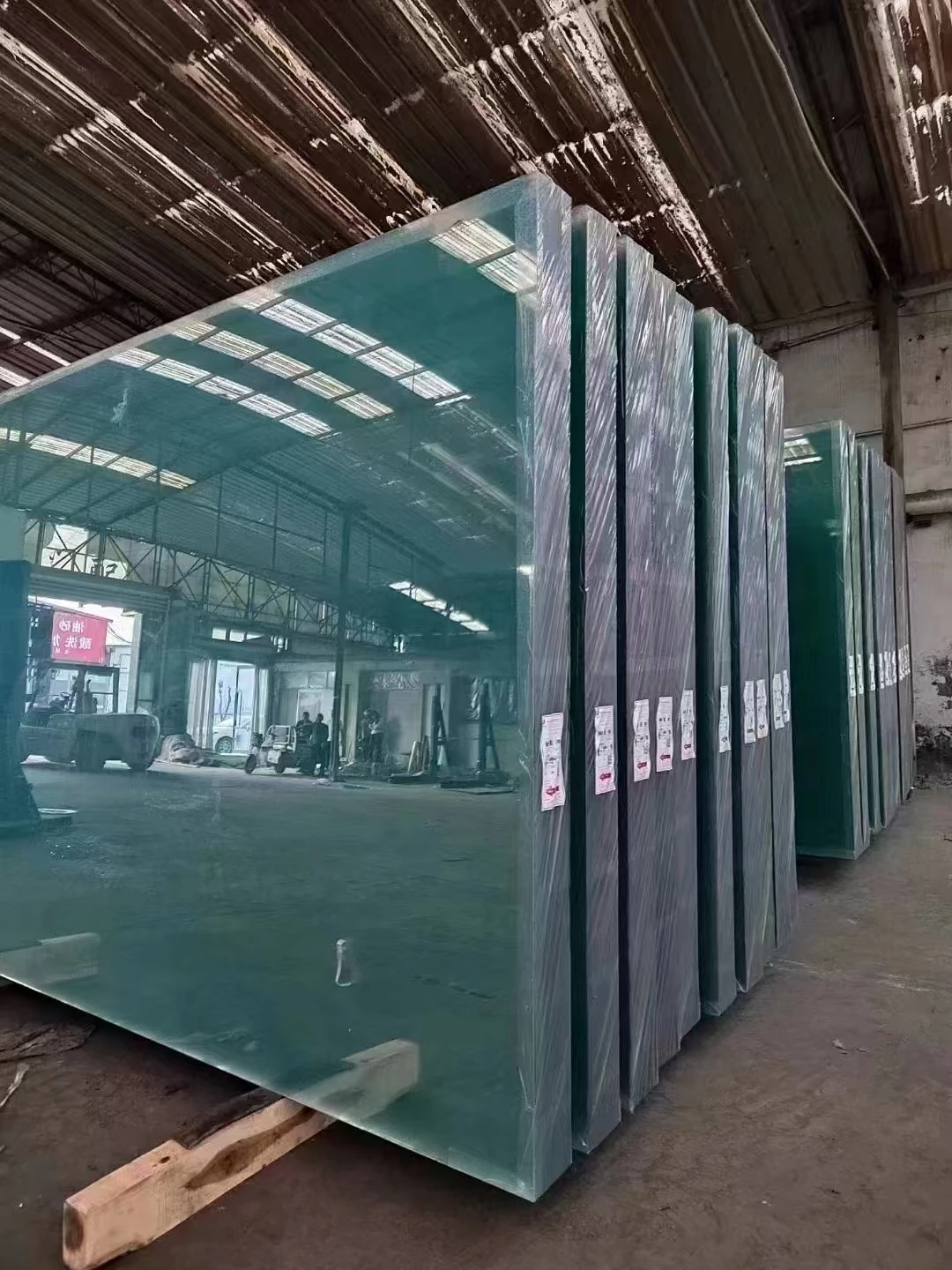Tempered glass, celebrated for its durability and safety, is an engineered product that necessitates precise dimensions to fulfill its intended purposes. Understanding the intricacies of tempered glass dimensions is crucial for consumers, manufacturers, and professionals who rely on this robust material for various applications. This exploration unveils insights into the significance, customization, and applications of tempered glass dimensions, ensuring a comprehensive understanding that enhances both practical and theoretical knowledge.

Tempered glass undergoes a meticulous process of thermal treatment, which significantly increases its strength and shatter resistance compared to regular glass. The dimensions of tempered glass play a pivotal role in its manufacturing and application across different industries. This material is increasingly used in architectural installations, automotive manufacturing, electronic displays, and household appliances.
Accurate measurement of tempered glass dimensions is foundational during the production phase. Manufacturers must adhere to specified thicknesses to ensure the glass meets safety and performance standards. Usually, tempered glass is available in thicknesses ranging from 3mm to 19mm, with variations based on the intended application. For instance, thicker glass is preferable for structural stability in architectural applications, while thinner glass finds use in mobiles and electronic devices where weight constraints are paramount.

Customization is a key aspect of deploying tempered glass effectively. Tailoring the dimensions involves considerations of both functional and aesthetic requirements, making precise cutting and shaping essential. Professionals employ advanced cutting technologies and rigorous quality checking to meet exacting standards. Ensuring precise dimensions allows tempered glass to be fitted seamlessly into its intended frame, enhancing its structural integrity and aesthetic appeal.
The role of tempered glass dimensions becomes particularly relevant in the architectural domain. Architects and builders favor this material for its safety features—tempered glass shatters into blunt, small pieces instead of sharp shards—and its aesthetic versatility. The ability to fabricate glass in large panels without extensive structural support introduces possibilities for innovative designs that prioritize natural light and transparency.
In the automotive industry, tempered glass is used in windows and windshields, demanding highly precise dimensions to fit the contours of various vehicle models. This precision ensures not just aesthetic alignment but also the functional necessity of aerodynamic efficiency and safety. Here, tempered glass dimensions correlate directly with stringent industry regulations for safety and performance efficiency, making it a critical factor in automotive design and manufacturing.
tempered glass dimensions
Electronics is another sector where the exact dimensions of tempered glass are pivotal. Screens for devices such as smartphones, tablets, and televisions require flawless execution in measurement to ensure durability against scratches and falls. The exact fit prevents extra space that could compromise sensitivity to touch or introduce the risk of screen detachment.
The production of tempered glass also emphasizes compliance with international standards and certifications that assure consumers of its quality and safety. Specifications like ASTM C1048 and EN 12150 define the dimensions, tolerances, and physical properties that any tempered glass must meet, ensuring a consistent benchmark for manufacturers.
Trustworthiness in choosing tempered glass comes from verifiable expertise, where professional manufacturers provide detailed specifications and compliance certification. Consumers are encouraged to seek documentation that details the precise dimensions, manufacturing dates, and testing results. A transparency about production processes and adherence to international standards instills confidence in the product’s reliability.
Finally, understanding tempered glass dimensions extends to installation and maintenance, where professionals employ best practices to ensure longevity and performance. Installation must consider the spatial requirements and the environment in which the glass will be fitted. An expertise in dealing with expansion tolerances and interaction with surrounding materials plays a crucial role in preventing structural stresses or failure.
In summation, a nuanced understanding of tempered glass dimensions, underpinned by real-world experience and expertise, elevates the reliability and application of this versatile material across myriad industries. The insight into precision measurement, customization, compliance, and maintenance underscores its indispensable role in modern design and functionality. Balancing aesthetics with practical functionality anchored in trust, tempered glass dimensions illuminate the path toward innovation and safety.
 Afrikaans
Afrikaans  Albanian
Albanian  Amharic
Amharic  Arabic
Arabic  Armenian
Armenian  Azerbaijani
Azerbaijani  Basque
Basque  Belarusian
Belarusian  Bengali
Bengali  Bosnian
Bosnian  Bulgarian
Bulgarian  Catalan
Catalan  Cebuano
Cebuano  Corsican
Corsican  Croatian
Croatian  Czech
Czech  Danish
Danish  Dutch
Dutch  English
English  Esperanto
Esperanto  Estonian
Estonian  Finnish
Finnish  French
French  Frisian
Frisian  Galician
Galician  Georgian
Georgian  German
German  Greek
Greek  Gujarati
Gujarati  Haitian Creole
Haitian Creole  hausa
hausa  hawaiian
hawaiian  Hebrew
Hebrew  Hindi
Hindi  Miao
Miao  Hungarian
Hungarian  Icelandic
Icelandic  igbo
igbo  Indonesian
Indonesian  irish
irish  Italian
Italian  Japanese
Japanese  Javanese
Javanese  Kannada
Kannada  kazakh
kazakh  Khmer
Khmer  Rwandese
Rwandese  Korean
Korean  Kurdish
Kurdish  Kyrgyz
Kyrgyz  Lao
Lao  Latin
Latin  Latvian
Latvian  Lithuanian
Lithuanian  Luxembourgish
Luxembourgish  Macedonian
Macedonian  Malgashi
Malgashi  Malay
Malay  Malayalam
Malayalam  Maltese
Maltese  Maori
Maori  Marathi
Marathi  Mongolian
Mongolian  Myanmar
Myanmar  Nepali
Nepali  Norwegian
Norwegian  Norwegian
Norwegian  Occitan
Occitan  Pashto
Pashto  Persian
Persian  Polish
Polish  Portuguese
Portuguese  Punjabi
Punjabi  Romanian
Romanian  Russian
Russian  Samoan
Samoan  Scottish Gaelic
Scottish Gaelic  Serbian
Serbian  Sesotho
Sesotho  Shona
Shona  Sindhi
Sindhi  Sinhala
Sinhala  Slovak
Slovak  Slovenian
Slovenian  Somali
Somali  Spanish
Spanish  Sundanese
Sundanese  Swahili
Swahili  Swedish
Swedish  Tagalog
Tagalog  Tajik
Tajik  Tamil
Tamil  Tatar
Tatar  Telugu
Telugu  Thai
Thai  Turkish
Turkish  Turkmen
Turkmen  Ukrainian
Ukrainian  Urdu
Urdu  Uighur
Uighur  Uzbek
Uzbek  Vietnamese
Vietnamese  Welsh
Welsh  Bantu
Bantu  Yiddish
Yiddish  Yoruba
Yoruba  Zulu
Zulu 


